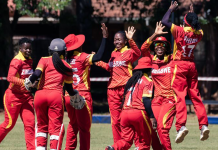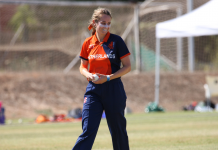Wednesday’s ICC T20 World Cup warm-up match against New Zealand was the first time Thailand played a Test country from outside Asia.
The match signified Thailand’s arrival on the world stage. Of course, it was a warm-up game with little meaning in the context of the T20 World Cup, but playing New Zealand was a new experience.
Let me take you back to Wednesday.
Pre-game
It is a blustery 20C morning. Kiwi South Island summer weather really. Karen Rolton Oval is named after…well, Karen Rolton. Rolton is a former Australian cricketer and vice-captain. She holds the record for the most number of runs scored by an Australian in women’s Test matches, and is a member of the ICC Cricket Hall of Fame.
The Oval itself is part of a larger tract of parkland near the Royal Adelaide Hospital and the University of South Australia City West Campus. It is a less daunting ground than the Adelaide Oval or the WACA but equally beautiful.
The wicket looks as good as any other from afar, and the outfield is lightning quick, unlike the thick carpets we often find in South East Asia.
The match announcer, Ben Hooks, wanders over to ask how to pronounce the players’ names. He is not the first to ask this question. Shan Kader has produced an audio guide and written pronunciation key, which I give Ben. I tell him, tongue in cheek, that he has no excuses for mispronouncing the players’ names now.
We learn that New Zealand Captain, Sophie Devine is not playing. The experienced wicketkeeper Rachel Priest will lead the side in her absence. Ultimately, it makes little difference to the result.
When Devine does bat in the practice superover at the end of the match, she punches a Ratanaporn Padunglerd length ball well over long-on for six with remarkable ease. It is one of the best shots of the day, and a mark of Devine’s class.
The team is relatively quiet in the warm-ups. It is hard to tell whether this constitutes focus or nerves or both. Probably both.
Bowling
We win the toss and choose to bowl first. The bowling in the powerplay lacks the consistency needed to build up any pressure on New Zealand. We bowl a few too many uncharacteristic leg-side deliveries, full tosses, and half-volleys. I put it down to rustiness from close to two weeks of indoor training, and to nerves.
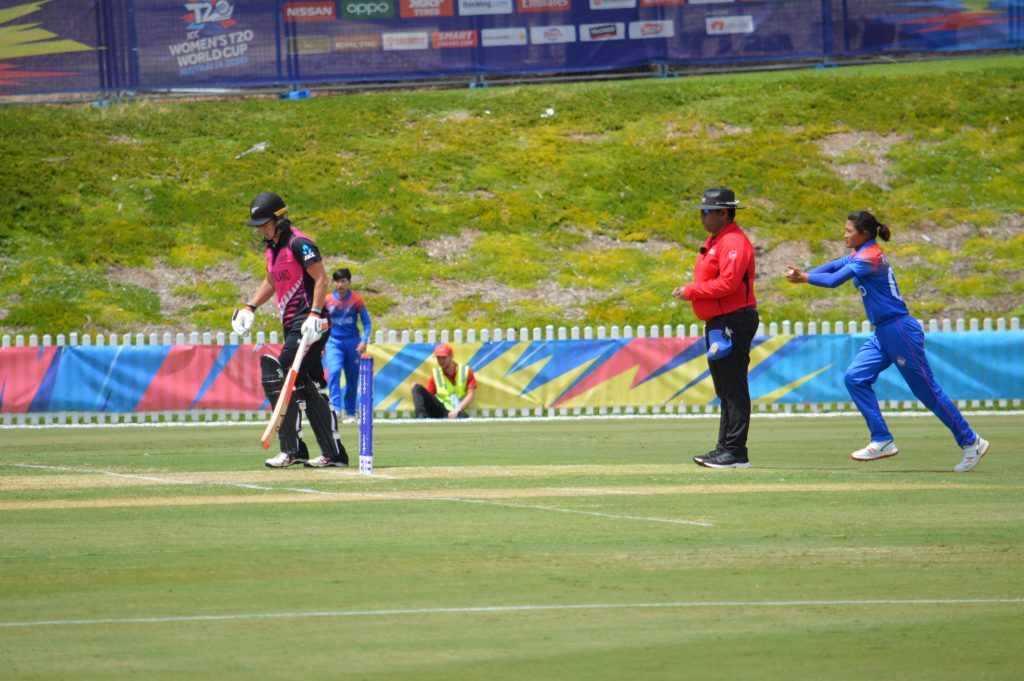
Every bad ball is dispatched to the rope. The margin for error at this level is noticeably smaller.
Priest, Green, Bates, and Kerr hit the ball with power and crispness unseen at the Associate level. Combined with the quick outfield, the game is played at a faster pace than we are normally used to. But we adapt well. The fielders are quick to the ball, and the ground fielding is clean.
With the ball, one must be able to hold lines and lengths whilst also varying pace, movement, and flight in order to trouble batsmen of this quality. Our bowlers possess these abilities, but perhaps don’t display them consistently enough.
Naruemol Chaiwai takes a good catch on the deep mid-wicket boundary off Boochatham to dismiss Green, and at 2/71 in the start of the 9th, another wicket or two could bring Thailand back into the game.
Skill and experience shine through in this crucial period. Bates and Kerr knock the ball around for singles and punish the semi-regular loose ball with ease. They are clinical with the bad balls from the start, but also have clear plans and go-to shots for periods of good bowling. It is instructive to see them use the depth of the crease to manufacture runs against good bowling.
By the time Chanida returns in the 20th over to snare two wickets in two balls, New Zealand are 2/181, and the partnership between Bates and Kerr is 126. They finish on 4/194.
Batting
The chase gets off to the worst possible start. Scottish-born offspinner Leigh Kasperek accounts for Natthakan Chantham (bowled) and Nannapat Khoncharoenkrai (caught) in consecutive deliveries. Thailand are 2/0 after three balls.
Will our batting last twenty overs? Will the margin of victory be closer to 150 than 50? These thoughts run through my head, but are quickly extinguished.
Nattaya Boochatham begins the second over with two exquisitely timed square drives for four off Rosemary Mair. The ever-reliable Naruemol ‘Champ’ Chaiwai is watchful in defence before square cutting Leah Tahuhu past point for four. 2/0 becomes 2/27.
Nattaya then clips Holly Huddleston to mid-wicket. 3/27. Chaiwai is sweeping Anna Peterson and Amelia Kerr with ease before she is trapped in front playing one too many. 4/38. Both set batsmen are back in the pavilion.
Again, Thailand rebuilds. Sornnarin Tippoch and Chanida Sutthiruang pick up the singles with relative ease, also punishing anything short or wide. Sornnarin crunches a short ball from Peterson to the mid-wicket fence. Chanida glides a wide one from Tahuhu to third man for four.
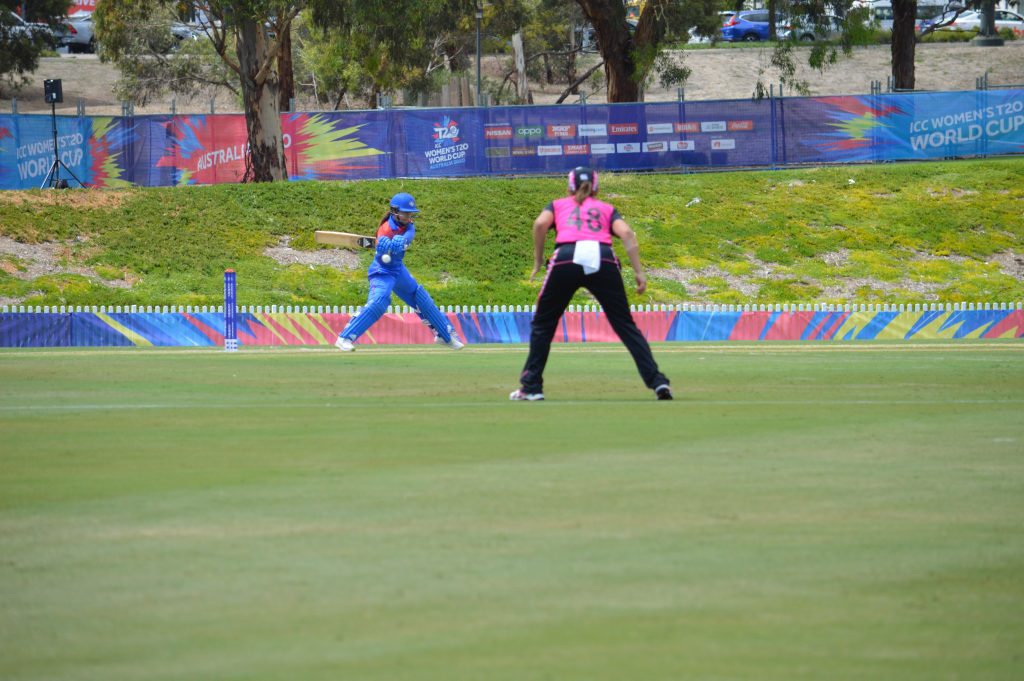
For a five over period, Thailand looks very much in control. 4/38 in the 9th becomes 4/68 in the 14th.
The next six overs yield another 45 runs for the loss of four wickets. There are gasps in the small crowd when number eight batter, Onnicha Kamchomphu hooks a Leah Tahuhu-bouncer for six over backward square leg. For the record, Tahuhu is one the quickest in the world.
These moments are laced through Thailand’s batting innings, demonstrating that the team has the talent to compete against the best. In between, however, are the lapses in concentration produce false shots, generate mini-collapses and inhibit serious momentum. We end on 8/113, 81 runs short.
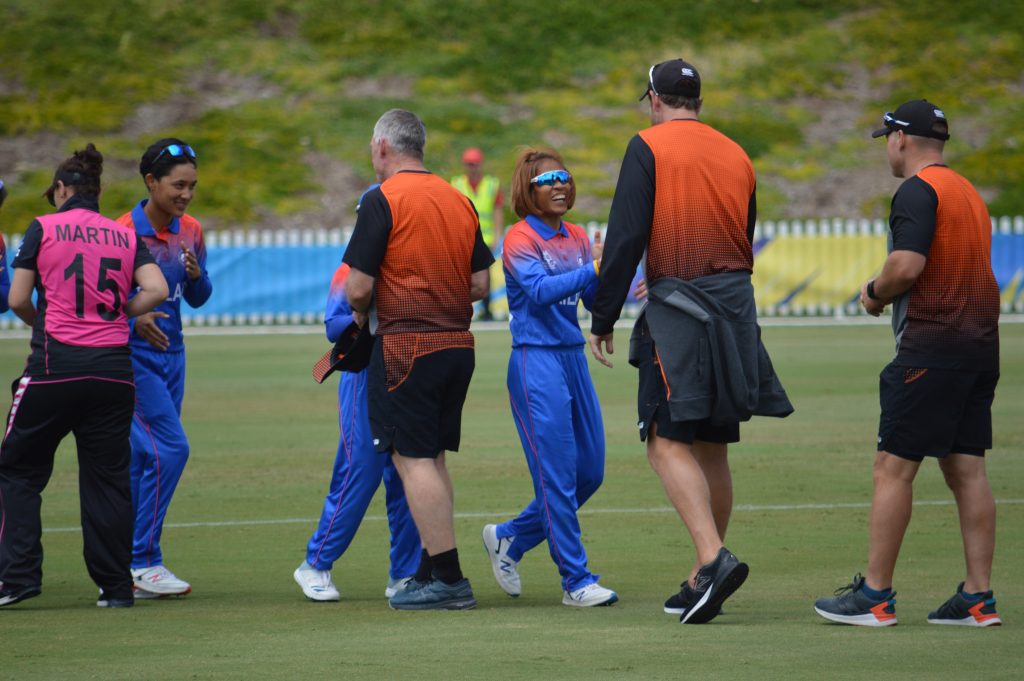
A loss of this magnitude in the first warm-up game is not the most eye-catching result. It could have been better. It could have been worse. The coaches have seen enough resilience with the bat and ball to be content with the workout.
Off-field moments
Post-match, Harshal Pathak invites Sophie Devine to share a few tips with the Thai players. Devine in turn brings the whole White Ferns team over. What ensues is a warm, impromptu gathering of the players, rarely seen in international cricket.
The players split into spin bowling, fast bowling, and batting groups and the Kiwis answer questions about batting partnerships, field settings, mindset, and strategy. A nice gesture quickly morphs into a genuine discussion about the sport. #SpiritOfCricket indeed.
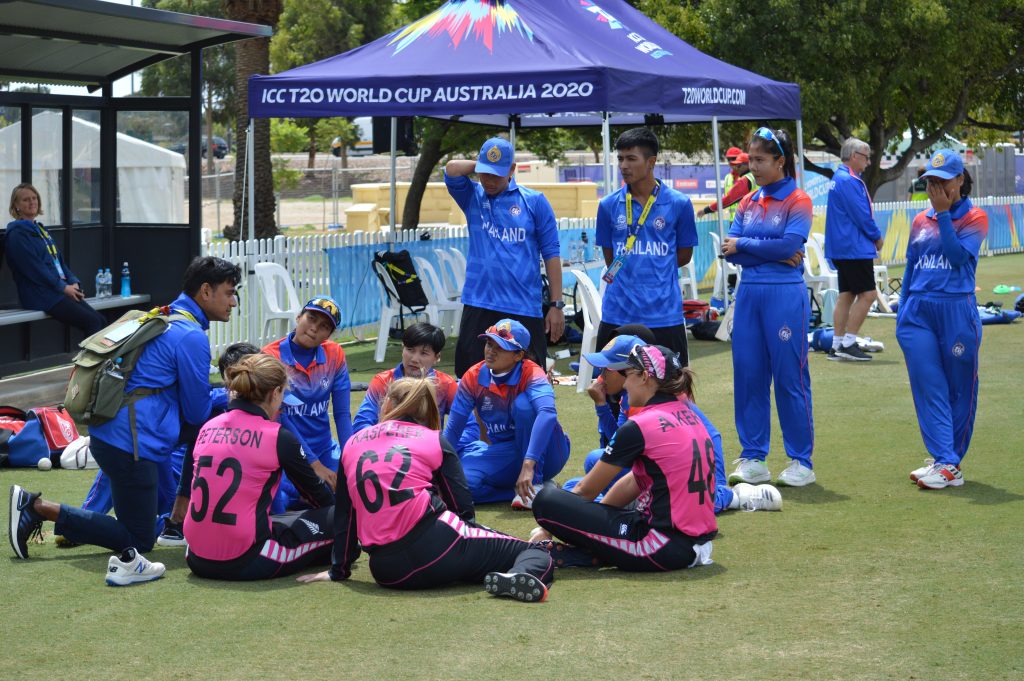
It is a highlight for the team. But at the same time, they are disappointed with their performance and know they can do better. In a post-match interview, Natthakan Chantham says that the Thailand “gifted New Zealand unnecessary runs through our own mistakes.”
This Thailand team exudes strong self-belief. It is something that has come from years of hard work in the lower reaches of Associate cricket, and from the successes of the last year. 17 T20I wins on the trot – including a win against Sri Lanka and three consecutive wins against Ireland – is no small matter. We are here to compete. To win games.
There is one other story to tell of this day. It is that of a small group of Thai fans who transformed the quiet, suburban vibe Karen Rolton Oval into a mini-carnival.
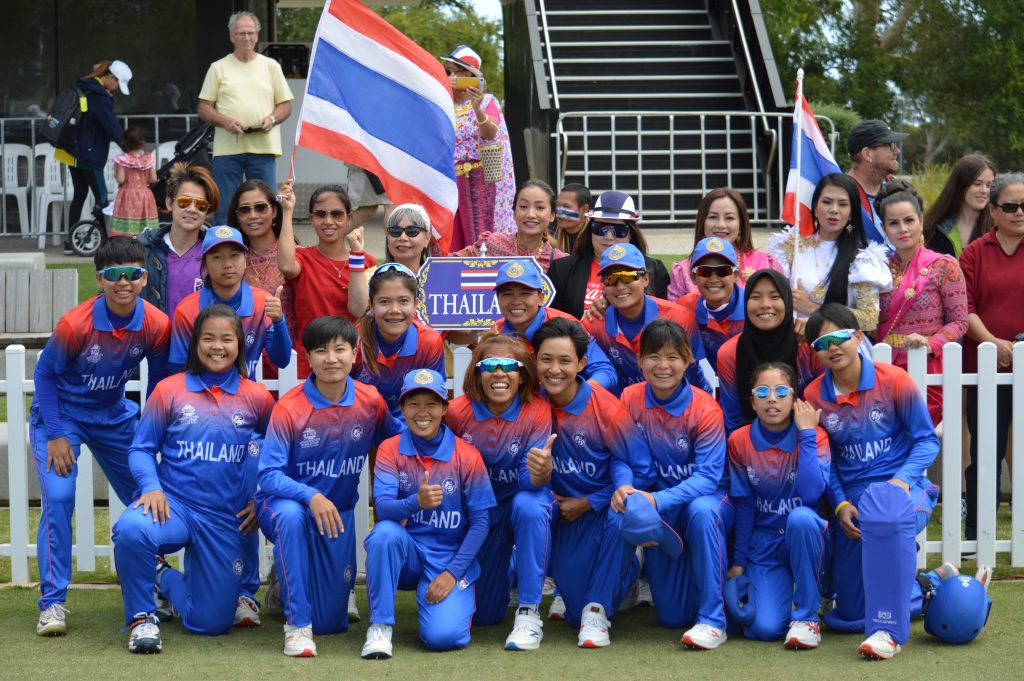
They are locals. The levels of knowledge about the game within the group vary. It doesn’t matter. They are dressed in impeccable pink, yellow, and red ‘Thai outfits.’ They wieldThai flags. Many of them.
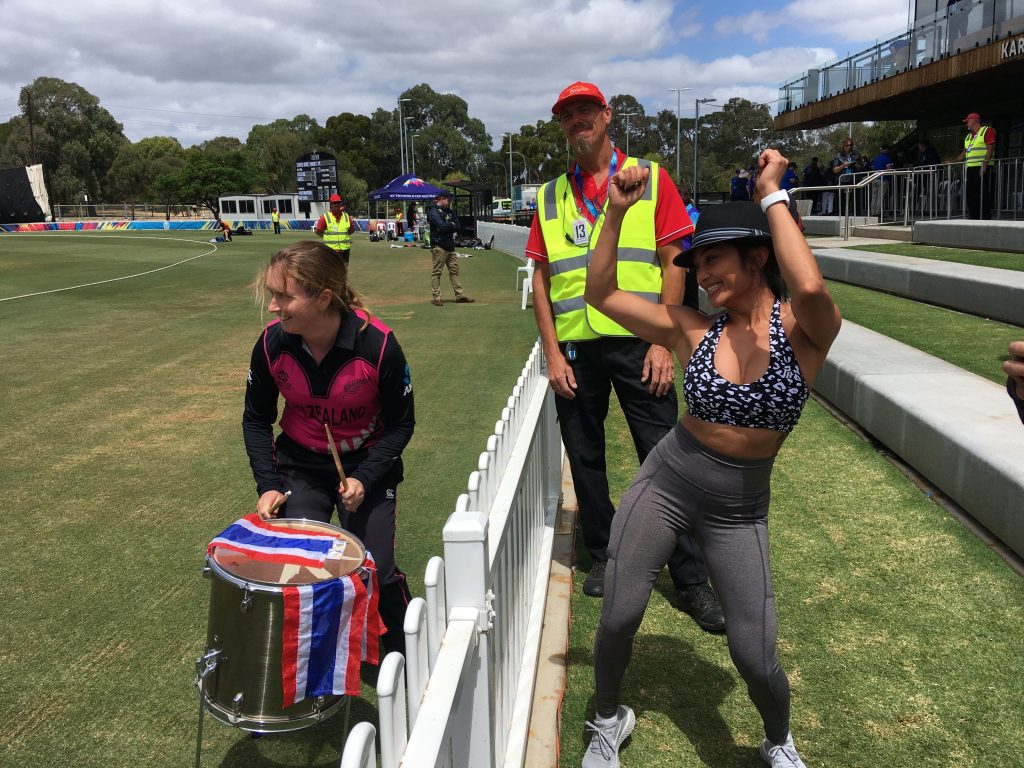
They cheer everything. Dot balls. Singles. Throws from the outfield. They cheer New Zealand. They dance endlessly to the distinct beat of a traditional Thai barrel drum. They even bring out boxes of cut melon, orange and green mamuang (mango) for all the players and officials.
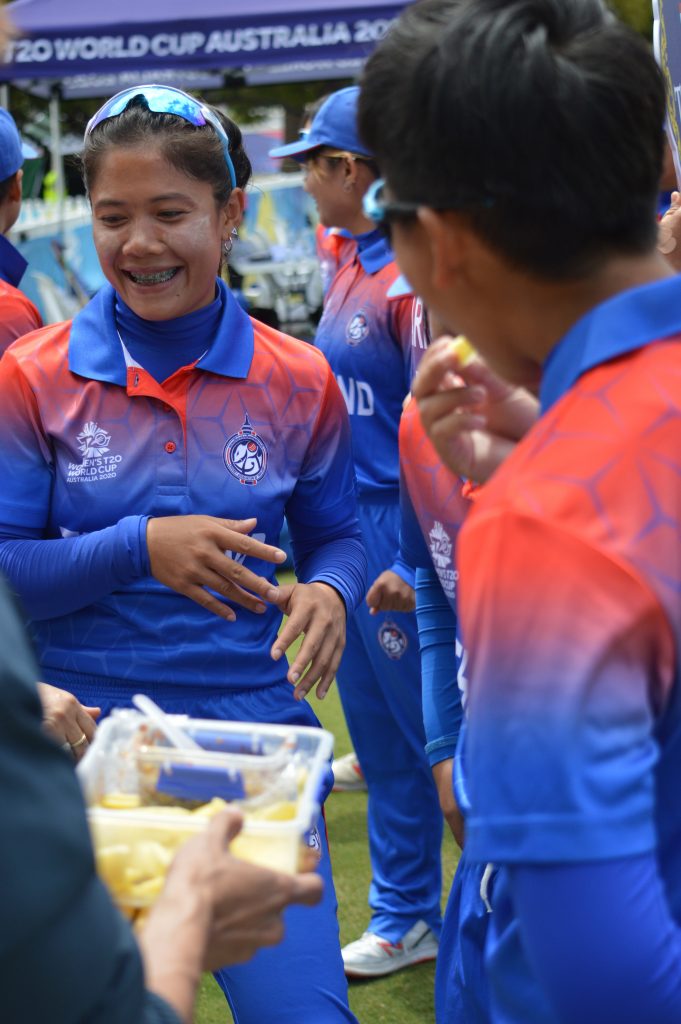
They are wonderful ambassadors for Thailand and it is heartening to see them at the ground. We hope to see more of the same during the World Cup.
Onwards to Perth
Yesterday’s trip from Adelaide to Perth goes smoothly. It is, however, a long trip and a mammoth operation. To give you just one example, our liaison officers transport the kit bags to Perth on an early morning flight. This, in itself, is a task. It involves loading and uploading 15 heavy bags full of equipment on and off vans, trolleys, and carousels on both ends.
Some of the team is unaware that there is a two and a half-hour time difference between Adelaide and Perth. Qualifying tournaments seldom take place in more than two cities. Players get used to time zones, grounds, hotels, restaurants, and routines.
Here, they will be playing in five cities, and not spending more than five days in any one. They will also move across four time zones. These are demands of playing in a World Cup, and they require a level of discipline from all of us to ensure minimal disruption to performance.
To provide an example of the logistical challenges we face, the team management drives out to a couple of Thai restaurants soon after arriving at the Crown Metropol in Perth to ensure that the team gets dinner at a reasonable hour. The restaurant has to cook an order for about twenty people. It arrives at 7:40 PM, which, a function of the time difference, is past 10 PM on the East Coast. Nonetheless, everybody is happy to eat good Thai food.
It bears repeating that there are so many committed people – liaison officers, security personnel, managers, and trainers – working to ensure that the team remains focused on what is important.
For now, though, it is off to training at the WACA in preparation for our first game against the West Indies.



